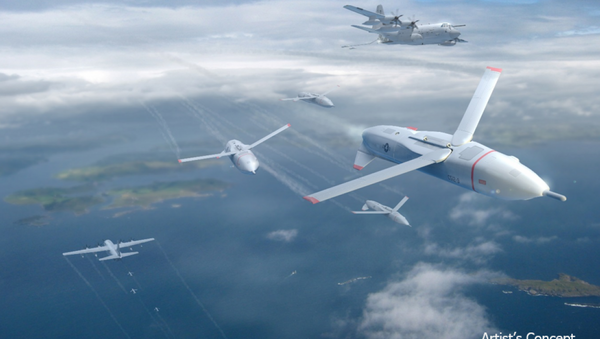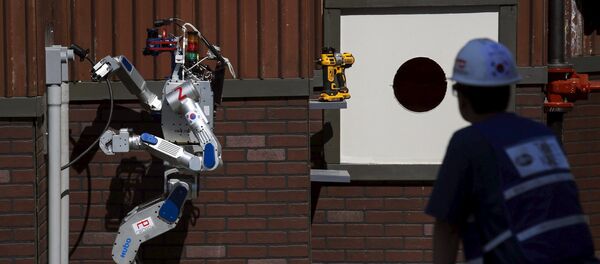The US Defence Advanced Research Projects Agency (DARPA) is exploring new technologies which use biomimicry or producing materials and systems based on biological anatomy and functions.
The Persistent Aquatic Living Sensors (PALS) project was launched in February to explore a range of aquatic life, from groupers and bioluminescent plankton to build marine surveillance systems that can detect underwater drones, submarines and other vehicles.
Biomimicry is useful as it can overcome the limitations of sonar, which is expensive difficult to maintain due to wear and tear caused by corrosive salt water and organisms. Future underwater surveillance drones used by the US Navy and other militaries can help support existing sonar systems by monitoring larger infrastructure such as aircraft carriers, fleets and harbours.
Under @DARPA's Persistent Aquatic Living Sensors #PALS programme, @northropgrumman will develop biological sensing hardware that has increased sensitivity for certain sensor modalities, achieving greater range, as a critical military capability. https://t.co/BZpCih7iII pic.twitter.com/8FTyVd6sdC
— DPMHAUS (@DPMHAUS1) May 10, 2019
But new biomimicry technologies pose challenges to DARPA as sensors must be developed using relevant animal behaviours, in addition to having a mastery of animal idiosyncrasies.
Dr. Lori Adornato, DARPA programme manager of DARPA's Biological Technologies Office, said that the PALS system would work in two stages where marine organisms would sense underwater vehicles in their environment and "respond with an output signal or other observable behavior" and secondly, instruments would "observe, record, and interpret the organisms' response, and transmit analyzed results to remote end users as distilled alerts".
Whilst biomimicry is nothing new and has been used to innovate swimming gear, submarines, and aviation, DARPA has embarked on numerous projects in the past, making Norway's "Belugagate" seem trivial in comparison.
Remote-controlled Roaches
University of Connecticut engineers fitted Madagascaran hissing cockroaches with tiny backpacks, allowing scientists to direct their movements.
Whilst such "biobots" have been envisoned for roughly a decade, UConn's discover offers precise control and feedback to the animal's neuromuscular systems. The latest model of biobots was fitted with a 9-axis measurement unit controlled by a Bluetooth transmitter to detect speed, temperature and direction, very much like sensors in a smartphone.
Biobots could be used for search and rescue operations in the future, according to Abhishek Dutta, UConn assistant professor of electrical and computer engineering.
"We believe our microcircuit provides a more sophisticated and reliable control system that brings us a step closer to real-world implementation of this technology," Dr. Dutta said.
Buzzing With Possibilities: Cyber Swarms
DARPA's OFFensive Swarm-Enabled Tactics (OFFSET) programme allows hundreds of weaponised drones to work in tandem to complete missions.
Using behaviours learned by insects, birds, fish and military formations, DARPA has learned how mass migrating animals function as a collective, rather than individual consciousness.
DARPA has tested the swarm drones using virtual simulations allowing contract to be awarded to companies such as Raytheon BBN Technologies and Northrop Gruman Corp. Soldiers would later control the "Gremlin" drones using augmented and virtual reality programmes, as well as voice and gesture commands.
Gray Fox Meets The Predator: Dynamic Camouflage
Cephalopods such as octopuses and cuttle fish are being exploited by a team from Northeastern Univeristy for their ability to camouflage in surrounding environments.
Scientists at Northeastern University, partnering with the US Army Natick Soldier Research, Development, and Engineering Centre (Natick Labs), are studying the pigmented nodules in cephalopods called ‘chromatophores', allowing them to make fabrics used in camouflage materials.
A Plague Upon Your Houses
DARPA has also launched the Insect Allies programme, allowing bugs to transmit genetically-engineered viruses to plants as an alternative to pesticides to organisms "introduced by state or non-state actors," it said.
But European researchers at the Max-Planck Institute of Evolutionary Biology have urged caution on such programmes, stating that the insects could become "malicious actors" by spreading diseases and ravaging crops with bioweapons.
See SPOT Run: Boston Dynamics Leading the Pack
US Born at the Massachusetts Institute of Technology in Boston, the robotics firm has gained a famous (and infamous) reputation for its line-up of droids ranging from canine forms such as BIGDOG and LITTLEDOG, to more Terminator-style bots like ATLAS and PETMAN.
When those Boston Dynamics robots finally rise up, your Roomba is totally going to snitch on you. https://t.co/Qb9wUOpu0B
— Honestly a bit tired of this (@WilliamTorrance) May 30, 2019
Boston Dynamics has passed into a number of shadowy hands, including DARPA to Google X in 2013 and later, Japanese multinational conglomerate Softbank Group in 2017.
Agent Fearn: Using Plants as 'Plants'
DARPA's Advanced Plant Technologies (APT) programme has managed to turn plants into spies by incorporating plant-based sensors that can snoop on passers-by, with remote monitoring using conventional hardware.
Using a plant's natural systems for interacting to environments, DARPA has developed next-gen sensors to detect stimuli such as pathogens, radiation and electromagnetic waves.
READ MORE: US Plans to Test 2 Hypersonic Missiles by End of 2019 — Defence Agency
The programme works by modifying plant genomes in order to trigger responses when stimuli are present, allowing a house plant to become the next 007, reducing "personnel risks associated with traditional sensors", DARPA stated.






